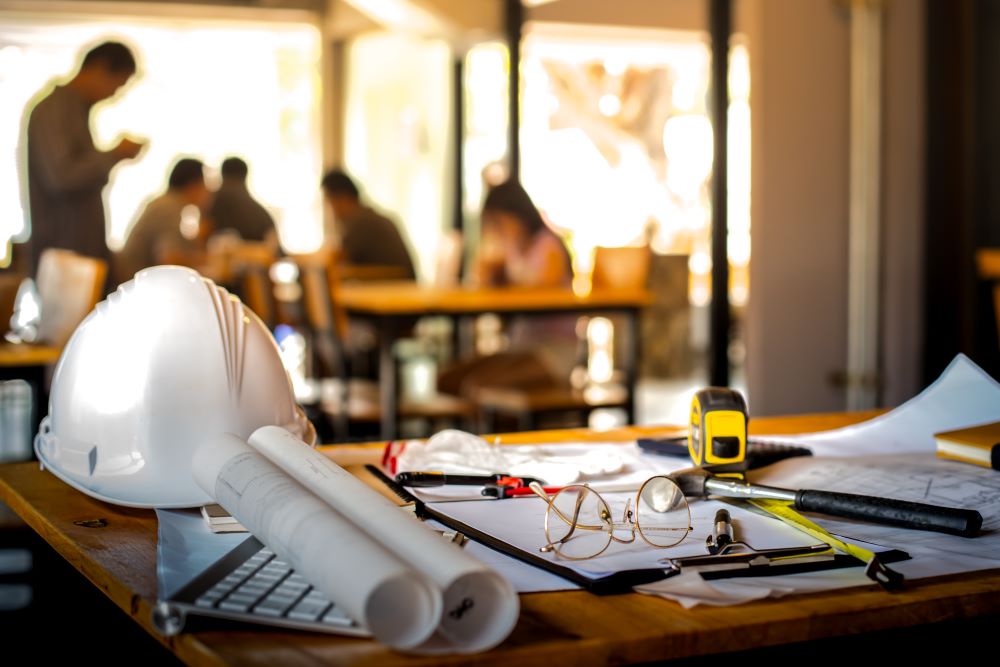
September 6, 2022

Sustainable building isn’t just the way of the future; it’s what’s happening now. Achieving energy-efficient design and construction is a multi-faceted approach involving engineers, architects, builders – and even federal tax incentives. The Section 179D energy efficient tax deduction is one of the main tax incentives for building owners who install qualifying energy-saving systems can leverage. The good news for Atlanta contractors is the recently enacted Inflation Reduction Act contains dozens of new incentives for eligible renewable energy upgrades and purchases. More specifically, the Section 179d deduction was significantly expanded allowing eligible contractors to realize even greater tax savings. To help clients, prospects, and others, Wilson Lewis has provided a summary of the key points below.
The now-permanent tax deduction is getting an upgrade of its own. First enacted in 2005, it provides a first-year tax deduction for new or upgraded buildings that meet certain energy efficiency standards. Current deduction levels are maintained through the end of 2022. These include:
Partial deductions are available based on the energy reduction percentages of a subsystem.
Starting in 2023, qualifying projects can earn a bonus deduction ranging from $2.50 to $5.00 per square foot. These projects must meet prevailing wage and apprenticeship requirements for the area. More specifically, qualified apprenticeship hours can comprise up to 15 percent of labor hours. The prevailing wage component extends beyond the contractor to subcontractors, laborers, and mechanics.
Projects are encouraged to attain a 50 percent reduction in energy costs with a minimum improvement of 25 percent. Prevailing wage projects can earn ten cents more per square foot for every percentage point above 25 that the project earns for energy efficiency, for the total possible deduction of $5.00 per square foot.
The former lifetime cap will be changed to a rolling three-year cap. That means previously owned commercial buildings can be recertified and claim the deduction again if the full deduction was claimed at least three years prior.
The determination period will change to four years prior to the date the building is placed in service.
Another change effective for tax years beginning in 2023 is for retrofits, which can qualify for an alternative Section 179D deduction if placed in service under a qualified retrofit plan. Further guidance on this change is expected to be published in the coming months.
Finally, it is important to note these changes will be in effect from 2023 through 2032.
Up until now, tax-exempt building owners, like non-profits, government entities, churches, and tribal governments could not claim the deduction. Instead, the tax value could only be transferred to the designer, and only in the case of government building owners.
Starting in 2023, more tax-exempt building owners will have control over how the deduction is allocated. The eligible taxpayer is the primary designer, though the organization can negotiate how the deduction is assigned. Architects, engineers, contractors, and designers will be eligible for all tax-exempt entities, including churches, schools, nonprofits, and tribal organizations. This change also includes REITs and publicly funded projects.
Also, tax-exempt government buildings can get certified once every four years if the deduction is allocated to the designer.
More guidance from the IRS and Treasury is needed.
The 45L tax credit is a somewhat related building tax credit that also got an extension and a boost in the Inflation Reduction Act. It had expired at the beginning of the year but has been reinstated at previous levels for the year. Starting next year, the following changes will take effect.
Multi-family builders and home developers can claim a credit per unit ranging from $500 for Energy Star manufactured homes to $5,000 for net zero single-family homes. Multi-family units have bonus credits available up to $2,500 and $5,000 for Energy Star and Zero Energy Ready units, respectively.
Contact Us
It appears that Section 179d calculations will become more complex for certain projects. It remains to be seen how the prevailing wage requirements will affect total deductions, since that can dramatically increase the value of the deduction but is also likely to increase labor costs, too. If you have questions about the information outlined above or need assistance claiming the Section 179d deduction, Wilson Lewis can help. For additional information call 770-476-1004 or click here to contact us. We look forward to speaking with you soon.